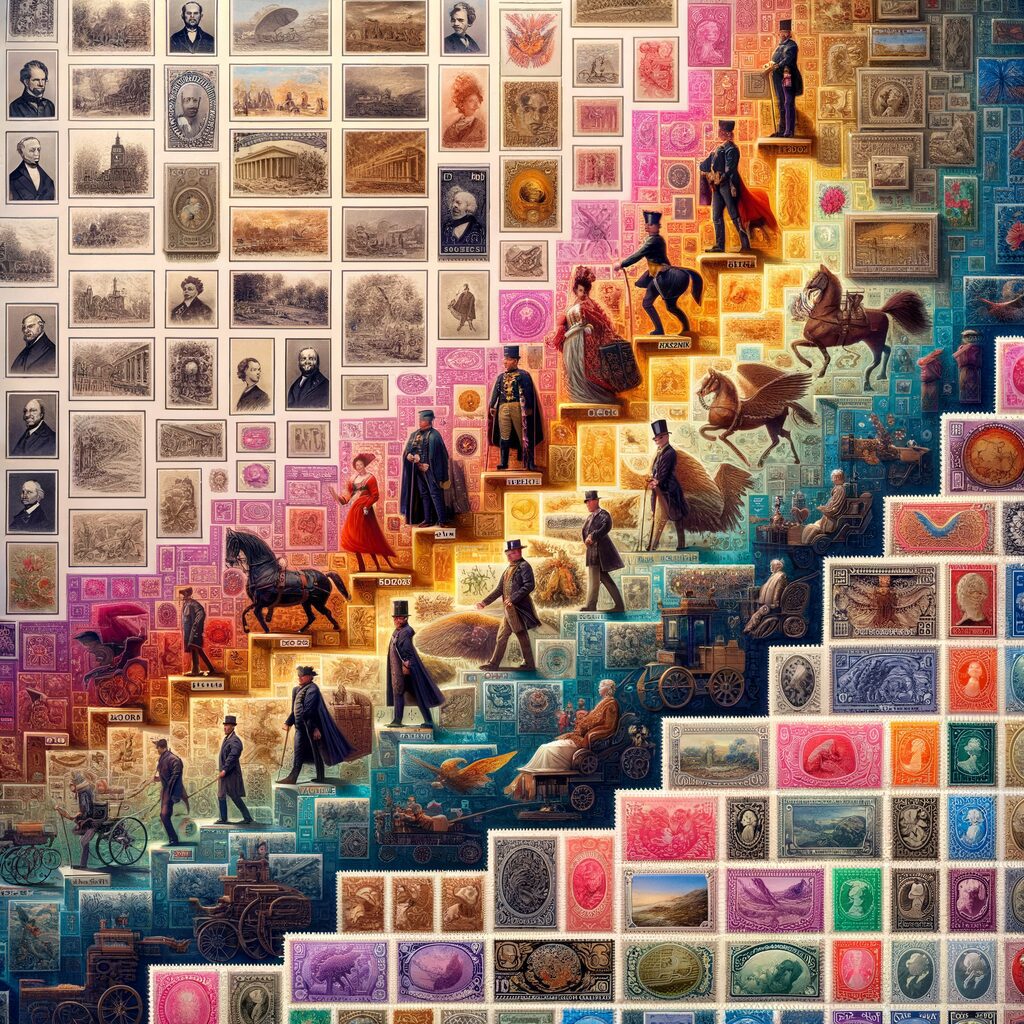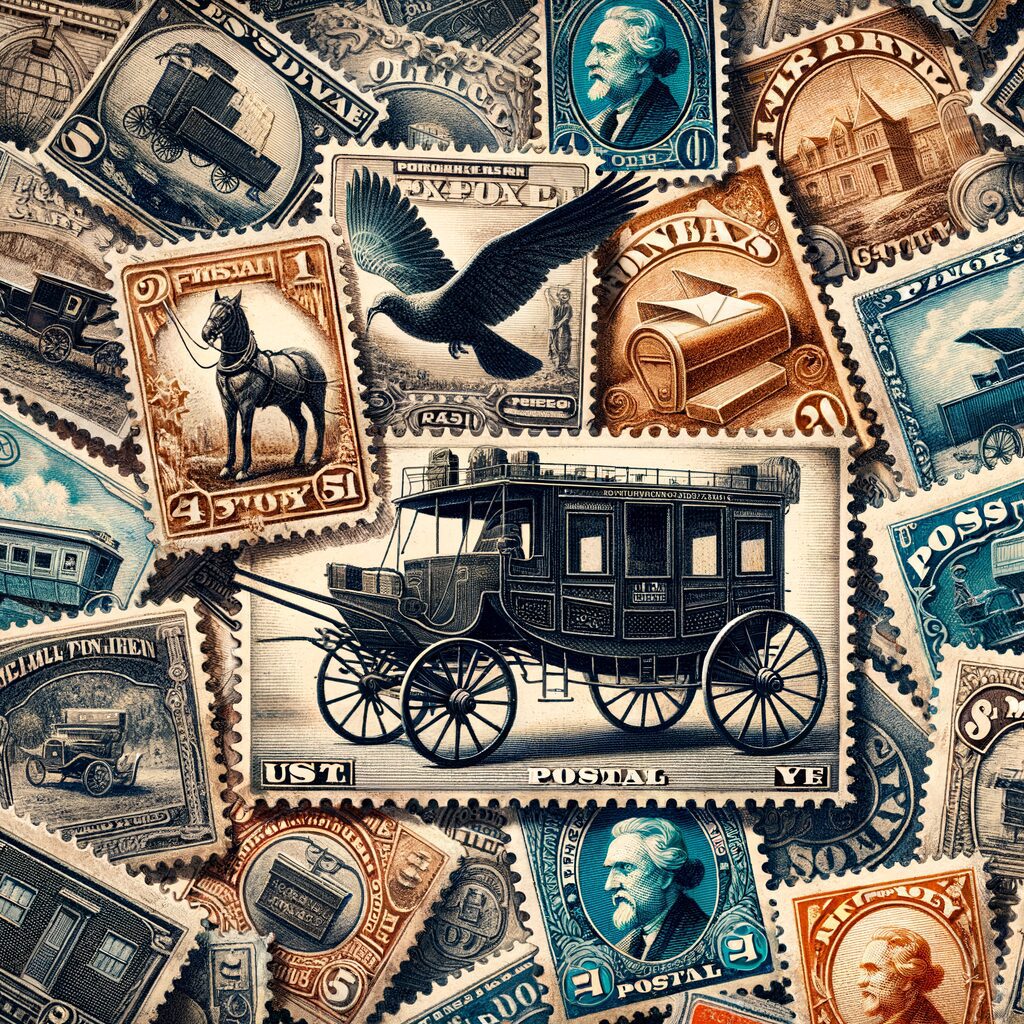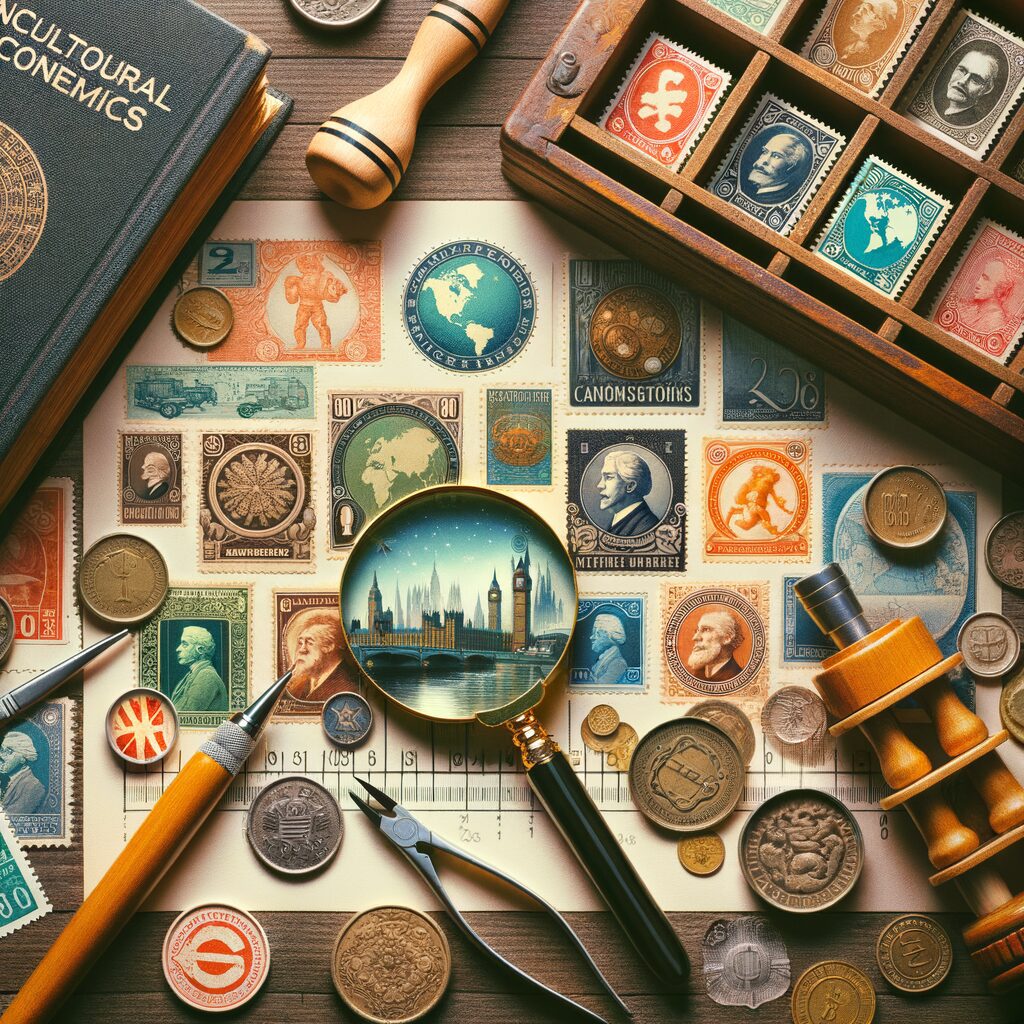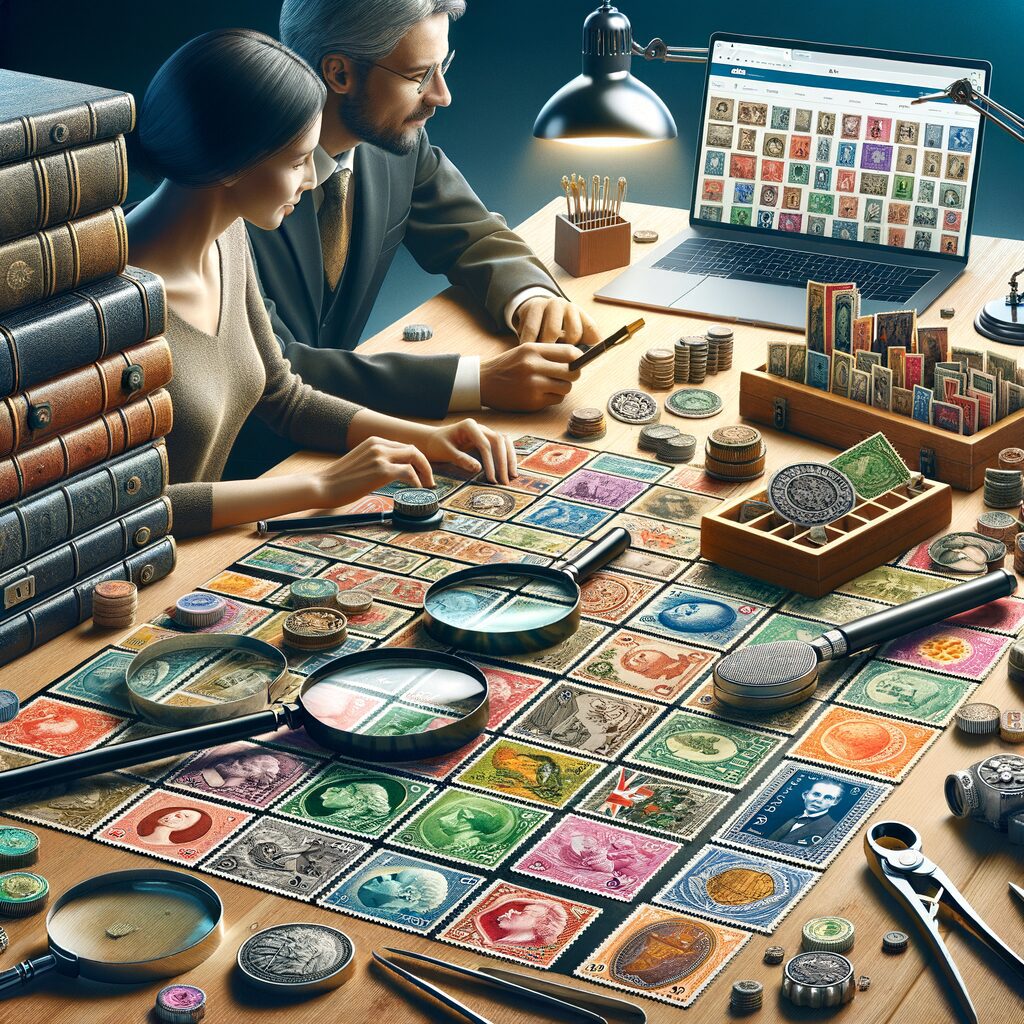What Is Philately?

Philately is the study and collection of postage stamps and related materials. It involves more than merely collecting stamps; it encompasses understanding their historical, cultural, and technical aspects.
The term “philately” is derived from the Greek words “philos,” meaning love, and “ateleia,” meaning tax exemption. This reflects the original purpose of stamps, which was to prepay postal fees, thus exempting the recipient from paying. Read: The Entire History Of Philately
Understanding What Philately Is
To comprehend what is philately, one must recognize its dual nature as both a hobby and an academic pursuit. Philatelists, or those who engage in philately, often focus on specific areas such as thematic collections or postal history. This focus allows them to explore particular interests while contributing to the broader knowledge of postal systems.
Philately differs from general stamp collecting in its emphasis on research and documentation. While collectors may acquire stamps for personal enjoyment, philatelists study the intricacies of stamp production and usage. This includes examining printing techniques, watermarks, and postal routes, among other aspects.
Historical Origins & Etymology
The concept of philately emerged in the mid-19th century, following the introduction of the first adhesive postage stamp, the Penny Black, in 1840. This British stamp revolutionized postal services by allowing senders to prepay postage, simplifying mail delivery. As stamps became more widespread, individuals began to collect them, initially as a casual pastime.
The term “philately” was coined by Georges Herpin, a French stamp enthusiast, in 1864. He sought to describe the growing interest in stamp collecting and study. Herpin’s term gained acceptance, distinguishing philately from other forms of collecting.
Distinction From General Stamp Collecting
Philately encompasses a broader scope than general stamp collecting, involving a deeper engagement with postal history and technology. While collectors may focus on acquiring stamps from various countries or themes, philatelists delve into the details of stamp production and distribution. This includes studying printing methods, paper types, and postal regulations.
Philatelists often contribute to the documentation and preservation of postal history. They may publish research findings, participate in exhibitions, and collaborate with museums and libraries. This scholarly approach distinguishes philately from casual collecting, emphasizing its role in cultural preservation.
Philately also involves the use of specialized tools and resources to enhance the collecting experience. Philatelists rely on catalogs, reference books, and online databases to identify and evaluate stamps. These resources provide valuable information on issue dates, varieties, and market values, supporting informed collecting decisions.
Understanding what is philately requires recognizing its multifaceted nature and its contributions to cultural and historical knowledge. It is a pursuit that combines personal interest with scholarly inquiry, offering insights into the development of postal systems and communication. Through philately, individuals engage with history, art, and technology, enriching their understanding of the world.
Historical Development
Stamp collecting began shortly after the introduction of the Penny Black in 1840. This first adhesive postage stamp marked a significant advancement in postal services. It simplified the mailing process and quickly gained popularity among the public.

As postal services expanded globally, the variety of stamps increased, attracting collectors from diverse backgrounds. Initially, stamp collecting was a casual hobby, often pursued by children and young adults. The novelty and artistic designs of stamps captivated many, leading to a growing interest in the hobby.
Significant Milestones In Philatelic History
Several key events have shaped the development of philately over the years. The publication of the first stamp catalog by Oscar Berger-Levrault in 1861 marked a turning point. This catalog provided a comprehensive list of available stamps, laying the foundation for systematic collecting and documentation.
The establishment of the first philatelic society, the Royal Philatelic Society London, in 1869, was another milestone. This society offered a platform for enthusiasts to collaborate and share their knowledge. It remains one of the most prestigious philatelic organizations today, contributing to the advancement of the field.
The introduction of international stamp exhibitions in the late 19th century further promoted philately. These events showcased rare collections and fostered international cooperation among collectors. They highlighted the cultural and historical significance of stamps, elevating philately to a respected pursuit.
Role Of Philatelic Societies & Publications
Philatelic societies have played a crucial role in advancing the study and appreciation of stamps. These organizations offer resources, networking opportunities, and educational programs for collectors. They also publish journals and newsletters, disseminating research findings and industry news.
Publications such as the Scott Standard Postage Stamp Catalogue have become essential tools for philatelists. These catalogs provide detailed information on stamp issues, varieties, and market values. They support collectors in identifying and evaluating stamps, enhancing the collecting experience.
Philatelic societies also contribute to the preservation of postal history through exhibitions and archives. They collaborate with museums and libraries to curate collections and promote public awareness. This collaboration ensures that philatelic materials are preserved for future generations.
The Evolution Of Philately In The 20th Century
The 20th century saw significant advancements in philately, driven by technological innovations and global events. The introduction of new printing techniques and materials expanded the diversity of stamps. Collectors began to focus on specialized areas, such as thematic collections and postal history.
The rise of digital technology in the late 20th century transformed philatelic practices. Online resources and databases provided collectors with unprecedented access to information. This digital shift facilitated global communication and collaboration among philatelists.
Philately has evolved from a casual pastime to a respected academic pursuit. Its history reflects broader developments in communication and technology. Through philately, individuals engage with cultural and historical narratives, contributing to the preservation of global heritage.
Components Of Philately

Understanding what is philately involves exploring its core components, which include stamps, postal history, and related materials. These elements provide insights into the evolution of postal systems and communication. Philatelists engage with these components to deepen their knowledge and appreciation of stamps.
Types of Stamps & Their Classifications
Stamps are classified into various types based on their purpose and design. Definitive stamps are issued for regular postal use and often feature simple designs. They are printed in large quantities and remain in circulation for extended periods.
Commemorative stamps celebrate significant events, anniversaries, or notable individuals. These stamps are usually issued in limited quantities and feature elaborate designs. Collectors often seek commemorative stamps for their artistic and historical value.
Airmail stamps, introduced in the early 20th century, facilitated the transportation of mail by air. These stamps often depict aviation themes and are valued for their role in postal history. Other specialized stamps include postage due, revenue, and charity stamps, each serving distinct functions.
The Significance Of Postal History & Postmarks
Postal history is a critical component of philately, focusing on the development and operation of postal systems. It involves studying postal routes, rates, and regulations, providing context for stamp usage. Postal history offers insights into communication networks and societal changes over time.
Postmarks, or cancellations, are markings applied to stamps to prevent reuse. They provide valuable information about the date and location of mailing. Collectors often seek covers, which are envelopes or packages with intact stamps and postmarks, for their historical significance.
Studying postmarks and covers allows philatelists to trace the movement of mail and understand postal operations. This aspect of philately highlights the intersection of stamps with broader historical and cultural narratives.
Tools & Resources Used By Philatelists
Philatelists rely on various tools and resources to enhance their collecting and research activities. Stamp catalogs, such as the Scott and Stanley Gibbons catalogs, offer comprehensive listings of stamps worldwide. These catalogs provide essential information on issue dates, varieties, and market values.
Magnifying glasses and perforation gauges are essential tools for examining stamps. They help collectors identify details such as watermarks, perforations, and printing errors. Accurate identification and evaluation are crucial for building a valuable collection.
Online databases and digital resources have become indispensable for modern philatelists. Websites and forums offer access to vast amounts of information and facilitate communication among collectors. These platforms support research, trading, and networking within the philatelic community.
Understanding what is philately requires engaging with its diverse components and resources. By exploring stamps, postal history, and related materials, philatelists gain a deeper appreciation of the postal system. This engagement enriches their knowledge and contributes to the preservation of cultural and historical heritage.
Cultural & Economic Dimensions
Philately holds significant cultural and economic importance, influencing societal narratives and market dynamics. Through stamps, philatelists engage with cultural heritage and historical events, preserving them for future generations. The economic aspects of philately also play a crucial role in the stamp market and related industries.

Philately’s Contribution To Cultural Heritage Preservation
Stamps serve as miniature canvases, capturing cultural themes and historical milestones. They often depict national symbols, famous personalities, and significant events, offering insights into a country’s heritage. By collecting and studying stamps, philatelists contribute to the preservation of cultural narratives.
Educational institutions and museums utilize stamps as teaching tools, illustrating historical and cultural topics. Exhibitions and workshops provide opportunities for the public to engage with philatelic materials. These initiatives promote awareness and appreciation of cultural diversity and history.
Philately also fosters cross-cultural understanding by highlighting global connections and shared histories. International stamp issues often commemorate events or figures of universal significance. This aspect of philately encourages dialogue and collaboration among different cultures.
Economic Impact Of The Stamp Market
The stamp market represents a significant economic sector, involving collectors, dealers, and auction houses. Rare and valuable stamps can command high prices, attracting investors and enthusiasts alike. The market’s dynamics are influenced by factors such as rarity, condition, and historical significance.
Philatelic auctions and exhibitions generate substantial revenue, supporting related industries and services. These events attract participants from around the world, contributing to local economies. They also provide platforms for collectors to buy and sell stamps, enhancing market liquidity.
The production and sale of new stamp issues by postal administrations also contribute to the economy. Commemorative and special edition stamps often appeal to collectors, boosting sales and revenue. This aspect of philately supports the financial sustainability of postal services.
Examples Of Rare & Valuable Stamps
Several stamps have achieved iconic status due to their rarity and historical significance. The British Guiana 1c Magenta, issued in 1856, is considered the world’s most valuable stamp. Its unique status and storied history have made it a prized possession among collectors.
The Treskilling Yellow, a Swedish stamp issued in 1855, is another notable rarity. A printing error resulted in its yellow color, making it highly sought after by philatelists. Such rare stamps often become the centerpiece of prestigious collections, symbolizing philatelic achievement.
The Inverted Jenny, a U.S. stamp issued in 1918, is famous for its printing error depicting an upside-down airplane. This error has made it one of the most recognizable and valuable stamps in philately. Collectors prize these rare stamps for their historical narratives and market value.
Philately’s cultural and economic significance underscores its importance as both a hobby and an academic pursuit. Through stamps, individuals engage with history, art, and economics, enriching their understanding of the world. This engagement ensures the continued relevance and vitality of philately in contemporary society.
Engaging With Philately Today

Understanding what is philately in the modern context involves recognizing its adaptation to contemporary trends and technologies. Philately remains vibrant, supported by digital innovations and a global community. This section explores current trends, online resources, and guidance for newcomers to the hobby.
Modern Trends & Technological Influences
The digital age has transformed philately, offering new ways to engage with stamps and postal history. Online platforms provide access to vast databases, enabling collectors to research and catalog their collections efficiently. These resources offer detailed information on stamp issues, varieties, and market values.
Social media and online forums have become essential tools for philatelists, facilitating communication and collaboration. Collectors can share insights, seek advice, and participate in virtual exhibitions and auctions. This connectivity fosters a sense of community and encourages the exchange of knowledge and experiences.
Technological advancements have also influenced stamp production, with innovations in printing techniques and materials. Modern stamps often feature intricate designs and security features, appealing to both collectors and postal users. These developments reflect the ongoing evolution of philately in response to changing demands.
Online Communities & Resources For Collectors
The internet has expanded access to philatelic resources, supporting collectors in their pursuits. Websites and online catalogs offer comprehensive listings of stamps from around the world. These platforms provide valuable tools for identifying and evaluating stamps, enhancing the collecting experience.
Philatelic societies and clubs have embraced digital technology, offering virtual meetings and events. These organizations provide educational programs, networking opportunities, and access to exclusive resources. Membership in such groups supports personal growth and engagement with the broader philatelic community.
Online marketplaces and auction sites have revolutionized the buying and selling of stamps. Collectors can browse extensive inventories, compare prices, and make informed purchasing decisions. These platforms offer convenience and accessibility, expanding opportunities for collectors to acquire desired items.
Tips For Beginners Interested In Starting A Collection
For those new to philately, understanding what is philately involves starting with a focused approach. Beginners should consider selecting a specific theme or country to guide their collecting efforts. This focus allows for a more manageable and meaningful collection, providing direction and purpose.
Acquiring basic knowledge about stamps and their history is essential for informed collecting. New collectors should familiarize themselves with different types of stamps and their classifications. Understanding the significance of these stamps aids in making thoughtful decisions about what to collect.
Investing in quality storage solutions, such as albums or stock books, is crucial for preserving a collection. Proper organization and labeling enhance the collecting experience, making it easier to track and expand the collection. Regular maintenance ensures that stamps remain in good condition, preserving their value and integrity.
Engaging with the philatelic community through societies, clubs, and online forums offers numerous benefits. These connections provide access to resources, support, and opportunities for trading or selling stamps. By participating in this vibrant community, collectors enrich their knowledge and appreciation of philately.
Philately today offers a dynamic and rewarding pursuit for enthusiasts of all levels. Through digital innovations and community engagement, collectors can explore the diverse and rich world of stamps. This engagement ensures the continued relevance and vitality of philately in the modern era.